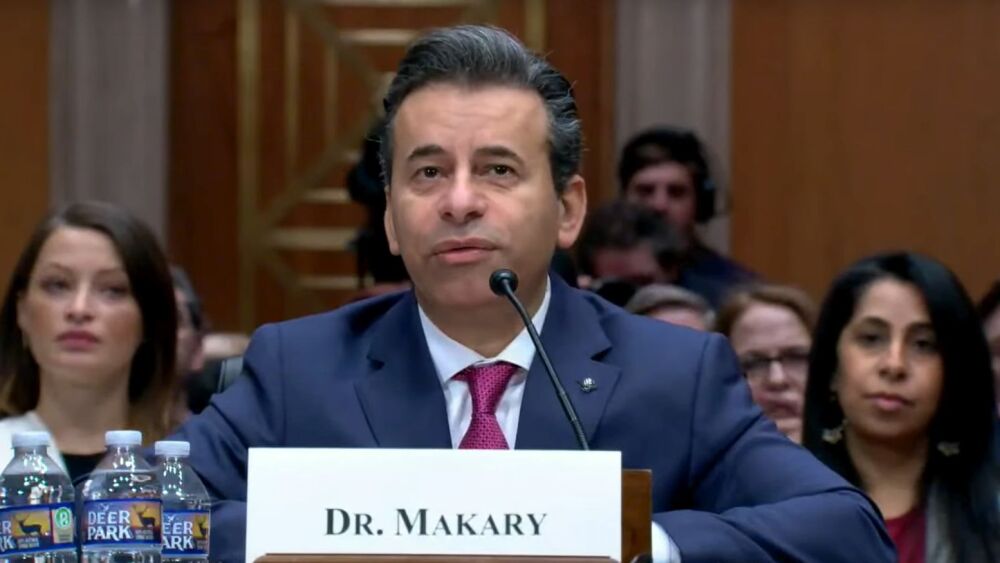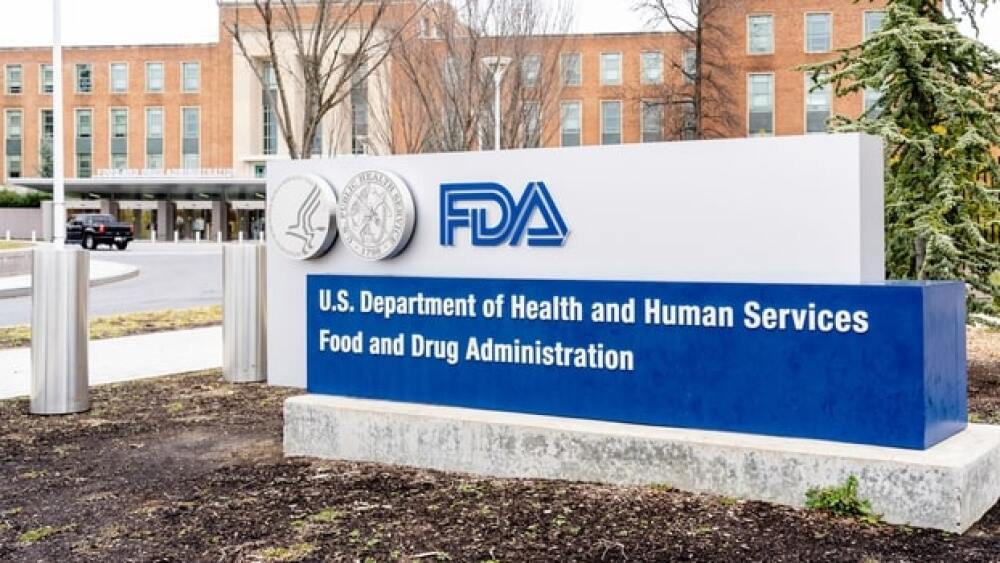RYBREVANT™ is the first fully-human, bispecific antibody approved in lung cancer Simultaneous FDA approval of a companion diagnostic aids in the identification of exon 20 insertion mutations
|
HORSHAM, Pa., May 21, 2021 /PRNewswire/ -- The Janssen Pharmaceutical Inc. Companies of Johnson & Johnson announced today the U.S. Food and Drug Administration (FDA) has granted the accelerated approval of RYBREVANTTM (amivantamab-vmjw) for the treatment of adult patients with locally advanced or metastatic non-small cell lung cancer (NSCLC) with epidermal growth factor receptor (EGFR) exon 20 insertion mutations, as detected by an FDA-approved test, whose disease has progressed on or after platinum-based chemotherapy.1 RYBREVANTTM is the first fully-human, bispecific antibody approved for the treatment of patients with NSCLC that targets EGFR exon 20 insertion mutations, which are the third most prevalent activating EGFR mutation.1,2 Today's approval follows the FDA's decision to grant Breakthrough Therapy Designation (BTD) in March 2020 and to initiate a Priority Review of the Biologics License Application (BLA) in December 2020. This indication is approved under accelerated approval based on overall response rate and duration of response.1 Continued approval for this indication may be contingent upon verification and description of clinical benefit in the confirmatory trials.1 "Today's FDA approval is an important development for people living with non-small cell lung cancer with exon 20 insertion mutations who, until now, have had no approved treatment options to target their disease," said Jill Feldman, co-founder of the EGFR Resisters, an advocacy organization patient group, and a lung cancer patient advocate. "We are excited by the promise this new treatment option brings to people with this particular type of lung cancer and their families." Lung cancer is the leading cause of cancer death among both men and women, accounting for almost 25 percent of all cancer deaths.3 Currently available targeted treatments, like EGFR tyrosine kinase inhibitors (TKI) are generally insensitive in treating NSCLC driven by EGFR exon 20 insertion mutations and are not FDA-approved for these patients.4,5,6 In addition, NSCLC driven by this mutation carries a worse prognosis and shorter survival rates compared with lung cancer driven by more common EGFR mutations, such as exon 19 deletions and L858R substitutions.7,8 Patients newly diagnosed with metastatic NSCLC with EGFR exon 20 insertion mutations have a real-world median overall survival (OS) of 16.2 months (95 percent confidence interval [CI], 11.0 – 19.4), which is lower than patients with EGFR exon 19 deletions/L858R mutations, who have a real-world median OS of 25.5 months (95 percent CI, 24.5 – 27.0).9 "Lung cancer is a complex disease, and through the study and deeper understanding of genetic alterations like EGFR exon 20 insertion mutations, we are able to target the disease in new ways and improve treatment outcomes for patients," said Joshua K. Sabari, M.D., New York University Langone's Perlmutter Cancer Center and study investigator, who presented the latest clinical trial results at the International Association for the Study of Lung Cancer's (IASLC WCLC) 2020 World Conference on Lung Cancer Singapore. "Amivantamab-vmjw is an innovative bispecific antibody that brings an important new therapeutic approach to physicians caring for patients with this serious and rare type of lung cancer." RYBREVANTTM is a fully-human bispecific antibody directed against EGFR and MET receptors.1 RYBREVANTTM binds extracellularly (outside of the cell) inhibiting tumor growth and leading to tumor cell death.1 Today's accelerated FDA approval is based on positive results from the Phase 1 CHRYSALIS study, a multicenter, open-label, clinical study evaluating RYBREVANTTM as a monotherapy in patients enrolled in the prior platinum containing chemotherapy cohort.1,10 Initial results from the CHRYSALIS EGFR exon 20 insertion mutation population, which supported the BTD, were presented at the American Society of Clinical Oncology 2020 Virtual Scientific Program, and updated results were presented at the IASLC WCLC 2020. "The approval of RYBREVANT, along with the companion diagnostic test, addresses high unmet need in the treatment of people with genetically defined non-small cell lung cancer," said Peter Lebowitz, M.D., Ph.D., Global Therapeutic Area Head, Oncology, Janssen Research & Development, LLC. "At Janssen, we are committed to the development of innovative therapies like RYBREVANT and believe that advancing medicines targeting specific pathways can bring the greatest benefits and improve outcomes for patients with tumor alterations such as EGFR and MET." The FDA simultaneously approved Guardant Health's Guardant360® CDx liquid biopsy blood test as a companion diagnostic for use with RYBREVANTTM. Next-generation sequencing test offers an alternative to polymerase chain reaction (PCR)-based tests which fail to identify 50 percent or more of exon 20 insertion mutations.11 Information on FDA-approved tests for the detection of EGFR genetic alterations in NSCLC is available at: http://www.fda.gov/CompanionDiagnostics. "Today's milestone reflects progress and determination in our mission to develop and deliver transformational therapies to improve the lives of people diagnosed with some of the most devastating and complex diseases of our time," said Mathai Mammen, M.D., Ph.D., Global Head, Janssen Research & Development, Johnson & Johnson. "The approval of RYBREVANT, the first lung cancer treatment for Johnson & Johnson, strengthens our commitment to harness science, expertise and scale to dramatically alter the trajectory of lung cancer, and reduce the impact of the world's leading cause of cancer mortality." About RYBREVANTTM **In 2018, Janssen Biotech, Inc. entered into a license and collaboration agreement with Yuhan Corporation for the development of lazertinib. About the CHRYSALIS Study In the ongoing Phase 1 CHRYSALIS study, patients with locally advanced or metastatic NSCLC with EGFR Exon 20 insertion mutations weighing less than 80 kg received RYBREVANTTM 1050 mg and patients weighing at least 80 kg or more received RYBREVANTTM 1400 mg weekly for four weeks, with the initial dose as a split infusion in week 1 on day 1 and day 2, then administered every two weeks thereafter until disease progression or unacceptable toxicity.1 Disease response using overall response rate (ORR), per Response Evaluation Criteria in Solid Tumors Version 1.1* (RECIST v1.1) as evaluated by Blinded Independent Central Review (BICR), was the primary endpoint.1 In the prior-platinum chemotherapy treated cohort (n=81), the confirmed ORR, as assessed by blinded independent central review, was 40 percent (95 percent CI, 29 – 51), with 3.7 percent having complete responses (CR) and 36 percent achieving partial responses (PR).1 Permanent discontinuation of RYBREVANTTM due to an adverse reaction (AE) occurred in 11 percent of patients who received RYBREVANTTM.1 AEs resulting in permanent discontinuation of RYBREVANTTM in greater than or equal to one percent of patients were pneumonia, infusion-related reactions (IRR), pneumonitis/interstitial lung disease (ILD) dyspnea, pleural effusion and rash.1 Dose interruptions of RYBREVANTTM due to AEs occurred in 78 percent of patients.1 IRR requiring infusions interruptions occurred in 59 percent of patients.1 Adverse reactions requiring dose interruption in greater than or equal to five percent of patients included dyspnea, nausea, rash, vomiting, fatigue and diarrhea.1 The most common AEs (greater than or equal to 20 percent) in patients who received RYBREVANTTM were rash (84 percent), IRR (64 percent), paronychia (50 percent), musculoskeletal pain (47 percent), dyspnea (37 percent), nausea (36 percent), fatigue (33 percent), edema (27 percent), stomatitis (26 percent), cough (25 percent), constipation (23 percent) and vomiting (22 percent).1 *RECIST (version 1.1) refers to Response Evaluation Criteria in Solid Tumors, which is a standard way to measure how well solid tumors respond to treatment and is based on whether tumors shrink, stay the same or get bigger.17 Access to RYBREVANTTM (amivantamab-vmjw) About Non-Small Cell Lung Cancer (NSCLC) RYBREVANT™ IMPORTANT SAFETY INFORMATION1 Based on the safety population, IRR occurred in 66% of patients treated with RYBREVANT™. Among patients receiving treatment on Week 1 Day 1, 65% experienced an IRR, while the incidence of IRR was 3.4% with the Day 2 infusion, 0.4% with the Week 2 infusion, and cumulatively 1.1% with subsequent infusions. Of the reported IRRs, 97% were Grade 1-2, 2.2% were Grade 3, and 0.4% were Grade 4. The median time to onset was 1 hour (range 0.1 to 18 hours) after start of infusion. The incidence of infusion modifications due to IRR was 62% and 1.3% of patients permanently discontinued RYBREVANT™ due to IRR. Premedicate with antihistamines, antipyretics, and glucocorticoids and infuse RYBREVANT™ as recommended. Administer RYBREVANT™ via a peripheral line on Week 1 and Week 2. Monitor patients for any signs and symptoms of infusion reactions during RYBREVANT™ infusion in a setting where cardiopulmonary resuscitation medication and equipment are available. Interrupt infusion if IRR is suspected. Reduce the infusion rate or permanently discontinue RYBREVANT™ based on severity. Interstitial Lung Disease/Pneumonitis1 Monitor patients for new or worsening symptoms indicative of ILD/pneumonitis (e.g., dyspnea, cough, fever). Immediately withhold RYBREVANT™ in patients with suspected ILD/pneumonitis and permanently discontinue if ILD/pneumonitis is confirmed. Dermatologic Adverse Reactions1 Toxic epidermal necrolysis occurred in one patient (0.3%) treated with RYBREVANT™. Instruct patients to limit sun exposure during and for 2 months after treatment with RYBREVANT™. Advise patients to wear protective clothing and use broad spectrum UVA/UVB sunscreen. Alcohol free emollient cream is recommended for dry skin. If skin reactions develop, start topical corticosteroids and topical and/or oral antibiotics. For Grade 3 reactions, add oral steroids and consider dermatologic consultation. Promptly refer patients presenting with severe rash, atypical appearance or distribution, or lack of improvement within 2 weeks to a dermatologist. Withhold, dose reduce or permanently discontinue RYBREVANT™ based on severity. Ocular Toxicity1 Embryo Fetal Toxicity1 Adverse Reactions1 Please read full Prescribing Information for RYBREVANT™. About the Janssen Pharmaceutical Companies of Johnson & Johnson Learn more at www.janssen.com. Follow us at www.twitter.com/JanssenGlobal and www.twitter.com/JanssenUS. Janssen Biotech, Inc. and Janssen Research & Development LLC are part of the Janssen Pharmaceutical Companies of Johnson & Johnson.
*Dr. Sabari has served as a consultant to Janssen; he has not been paid for any media work. Cautions Concerning Forward-Looking Statements This press release contains "forward-looking statements" as defined in the Private Securities Litigation Reform Act of 1995 regarding RYBREVANTTM (amivantamab-vmjw). The reader is cautioned not to rely on these forward-looking statements. These statements are based on current expectations of future events. If underlying assumptions prove inaccurate or known or unknown risks or uncertainties materialize, actual results could vary materially from the expectations and projections of Janssen Research & Development, LLC, Janssen Biotech, Inc., any of the other Janssen Pharmaceutical companies, and/or Johnson & Johnson. Risks and uncertainties include, but are not limited to: challenges and uncertainties inherent in product research and development, including the uncertainty of clinical success and of obtaining regulatory approvals; uncertainty of commercial success; manufacturing difficulties and delays; competition, including technological advances, new products and patents attained by competitors; challenges to patents; product efficacy or safety concerns resulting in product recalls or regulatory action; changes in behavior and spending patterns of purchasers of health care products and services; changes to applicable laws and regulations, including global health care reforms; and trends toward health care cost containment. A further list and descriptions of these risks, uncertainties and other factors can be found in Johnson & Johnson's Annual Report on Form 10-K for the fiscal year ended January 3, 2021, including in the sections captioned "Cautionary Note Regarding Forward-Looking Statements" and "Item 1A. Risk Factors," and in the company's most recently filed Quarterly Report on Form 10-Q, and the company's subsequent filings with the Securities and Exchange Commission. Copies of these filings are available online at www.sec.gov, www.jnj.com or on request from Johnson & Johnson. None of the Janssen Pharmaceutical Companies nor Johnson & Johnson undertakes to update any forward-looking statement as a result of new information or future events or developments. 1 RYBREVANTTM Prescribing Information. Horsham, PA: Janssen Biotech, Inc.
Media Contacts: Suzanne Frost Investor Relations: Jennifer McIntyre U.S. Medical Inquiries:
SOURCE Janssen Pharmaceutical Companies of Johnson & Johnson |





